MOSt Shares : NASDAQ 100 ETF (N100) : Invest in NASDAQ ETF from India
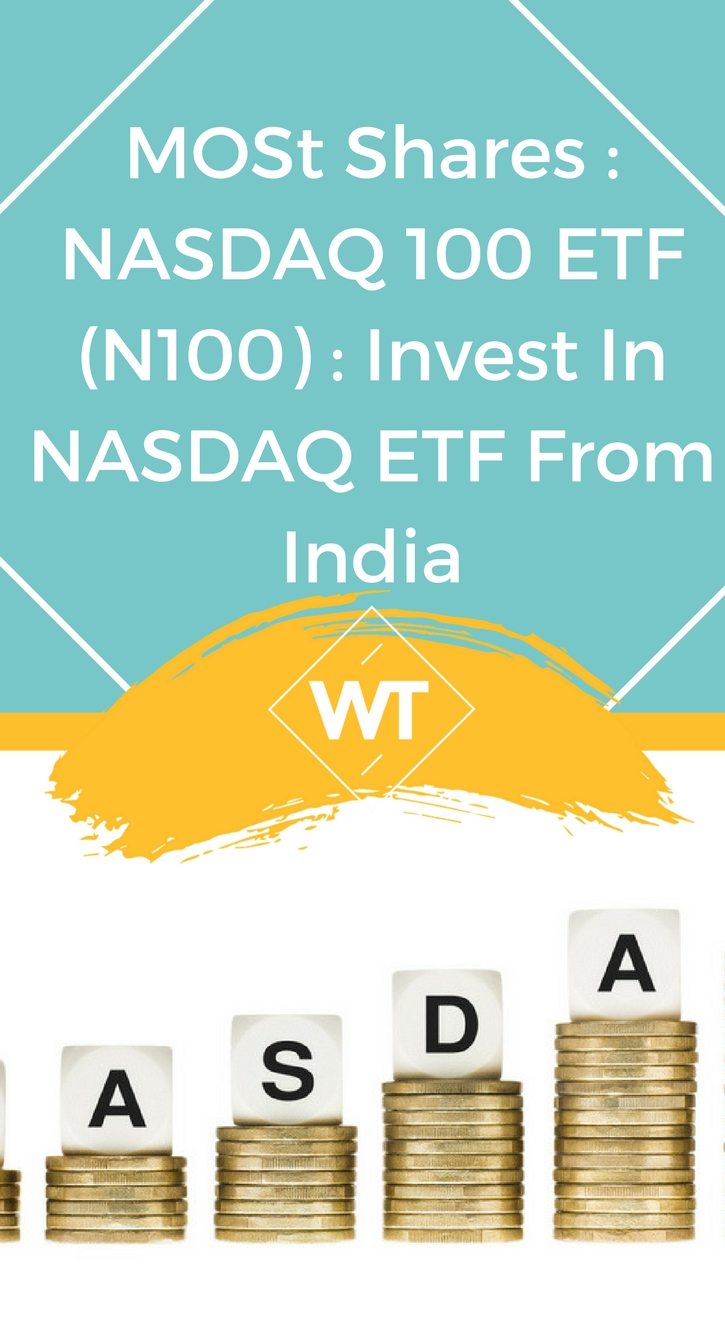
NASDAQ 100 ETF or N100 – have you heard about this investment option, but are not sure on how to incorporate this in your portfolio? Read on to find out more about N100.
1. Is it possible for small investors in India to invest in NASDAQ 100 ETF or N100 Companies?
Yes, possible. And the good news is you don’t have to remit US$ or open a broking account abroad.
2. Can I invest in Apple, Google, Starbucks, etc.?
No, you can’t invest in individual stocks; however, you can buy a unit of NASDAQ 100 ETF or N100, which contains a basket of 100 companies that are part of the index
Most of us are familiar with Gold Exchange Traded Fund and Nifty Exchange Traded Fund, which track Gold prices and Nifty index, respectively. How about an ETF which tracks overseas indices such as NASDAQ, FTSE 100, etc? A few funds have innovated and provided ETFs based on overseas indices such as Hang Seng, NASDAQ, etc.
For example, Goldman Sachs Asset Management (which acquired Benchmark Funds) launched Hang Seng Bees (Hang Seng index based ETF) a few years ago. Recently Motilal Oswal Asset Management Company launched NASDAQ 100 ETF, also known as N100 which tracks NASDAQ 100 index.
Lets understand how N100 works before debating on the advantages or disadvantages or about its suitability for retail investors.
What is NASDAQ 100 ETF (N100) ?
The NASDAQ 100 ETF or the N100 is an ETF which tracks NASDAQ 100 index, a leading index in the USA and popular in other parts of the world. The index is made up of large and stable global companies and with a focus on technology.
About NASDAQ 100
In case you haven’t heard about NASDAQ, please note that NASDAQ stands for “National Association of Securities Dealers Automated Quotations”. There are various indices under NASDAQ umbrella and N100 is one of them, while the other common index is the NASDAQ Composite. NASDAQ 100 is one of the leading indices which consists of companies across various industries such as technology hardware, software and service, pharmaceuticals and healthcare, media and telecom, retailing or wholesale trade as well as consumer services. (Source:Mostshares )
How N100 Works?
If you are familiar with Nifty Bees (Nifty ETF), you will easily understand N100 ETF as it follows a similar investment objective of tracking an index passively. The N100 ETF will follow the mandate of investing in companies that are part of the NASDAQ 100 in the same proportion as in the index.
For example, if NASDAQ 100 rises by 1%, the N100 ETF will more or less follow the trend of the index, barring any deviations due to time lag and the expenses/charges of the fund. The time differences are also due to the fact the ETF is traded in Indian market hours.
You can buy or sell NASDAQ 100 ETF or N100 ETF from your online trading account, just like any ETF. An ETF facilitates buying units in smaller quantities and helps small investors build long term wealth. For more details on taxation and details of the ETF please visit Mostshares.
Advantages/Benefits
- Diversification to International Markets: Buying one unit of N100 provides instant diversification by providing exposure to NASDAQ 100 companies.
- Liquidity: You can buy and sell any time in the market. The volume of trading is also decent, though its been erratic in nature, which is not new for an ETF which takes time to get established in the market.
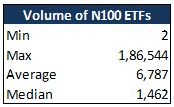
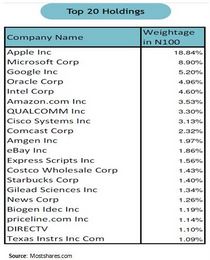
Based on the research of trading volumes of N100 from March 31, 2011 to August 13, 2012, it can be observed that the minimum (2 units) and maximum (1.86 lakhs) volumes are extreme cases. Average volume was 6,787 units, however the lowest and highest volumes in the last one month ranges from a low of 300 odd levels to a high of 20,000 plus levels.
Higher trading is a positive factor, but investors need to be aware that since this is relatively new ETF there will some amount of volatility to cope up with. This should not be an issue if you are investing for medium to long term (ie. from a 6 months to 2 years perspective).
Top Quality Stocks
The components of NASDAQ ETF100 or N100 ETF are some of the largest corporations listed on NASDAQ. How about owning a part of NASDAQ 100 index which has a basket of world’s leading brands such as Apple, Microsoft, Google, Intel, Qualcomm, eBay, Starbuck and Cisco?
This was only possible for millionaires who could remit foreign currency abroad to open a brokerage account and also bear the cost of operating the same. Today a normal investor in India can invest in NASDAQ 100. Lets call it a true democratization of financial markets.
Strategies
N100 can be suitable for short term investors as well as long term passive investors. Though intraday trading using N100 is theoretically possible, one has to be attentive to the volumes and ask-bid spreads. For starters or new investors trading in N100 is not recommended, however, there is no harm in entering and exiting at different points to make profits.
Low Cost
N100 has an expense ratio of 1% according to Mostshares . This makes it cost effective from an investor’s point of view.
Transparent Pricing
N100’s price is equivalent to approximately 1/1000th of NASDAQ 100 index value in Indian rupees. However, this is an approximate figure and can vary due to daily trading, expenses, cash component in the fund and other factors. The difference or variation between the NASDAQ 100 and the N100 ETF is termed “tracking error” in the financial world.
For example if NASDAQ 100 is at 3,000 level the value of one unit of N100 should be approximately Rs.150. How? Let figure it out step by step:
- Assume the 3,000 level is in US$.
- Assume one US$ is worth Rs.50, the index level in rupee terms will be Rs.150,000 (Rs.1.5 lakhs).
- When you convert this in to one unit (1/1000th) the value of one unit is Rs.150 (150,000 / 1000)
Disclaimer: The illustration is only for conceptual understanding. In actual market conditions there will be a variation in the value due to tracking error and other influencing factors.
Correlation with Indian or US Markets
About 53% of NASDAQ 100 companies’ revenue is from American region, while the rest comes from outside American continent. Its not surprising to note that several companies in NASDAQ 100 derive a major portion of their revenues from outside America.
According to data from Mostshares and Bloomberg about correlation between NASDAQ 100 and S&P CNX Nifty for 1-year and 10-year periods are 0.84 and 0.57, respectively. Lower correlation implies that the markets are not significantly co-related or influenced by each other. This simply means NASDAQ truly enables investors to diversify their portfolio with international index exposure.
Disadvantages
# 1. Lack of History
The N100 ETF was launched in March 2011, so it has a history of about close to a year and a half.
# 2. No Individual Stock Exposure
This is not a disadvantage but an advantage because you are getting a basket of securities instead of individual stocks. However, frankly speaking you don’t get individual stocks such as Apple, Inc. in your portfolio but a basket of different stocks, which is a blessing in disguise cutting down your individual stock/sector risk.
# 3. Volume
Low volumes can be an issue, but N100 has been traded frequently and this has not been a major issue barring few occasions.
Conclusion
Investors, who are familiar with Indian markets and have a strong portfolio in place, can look at N100 for diversifying in to international markets. When Indian markets are stagnant or jittery, you can get benefited assuming NASDAQ performs well.
Though this ETF is not recommend for starters, its easily accessible to investors in India. Until today, the only route for investing in international market was through opening overseas trading accounts, which involved getting permission for remitting funds, dealing with currency risks (fluctuations) and other operational issues.
However, N100 is traded on NSE/BSE and one can buy it from their domestic trading accounts, and since it is denominated in Indian rupees, you are shielded from currency risk.
An average person in India can buy a basket of NASDAQ 100 companies for a mere Rs.150 (example as per current price), which is comparable to the price of a special thali (mega meal) in urban restaurants. People who have invested in Indian stocks, gold and various other instruments can now add a slice of NASDAQ to their portfolio.

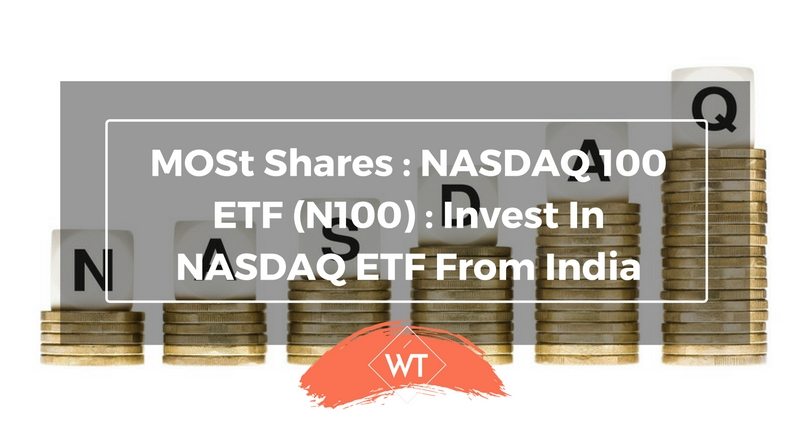
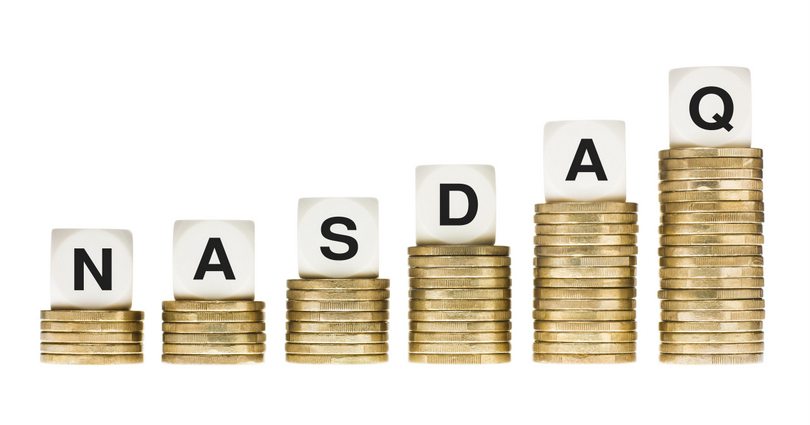






Leave a Reply